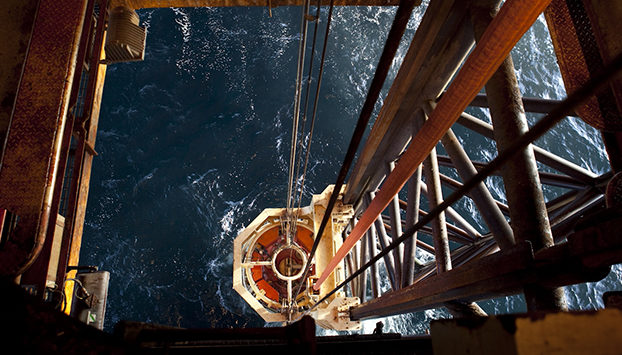
Falling oil prices should not spark a panic about investment and jobs in the North Sea, an industry expert said last night.
Alex Kemp, professor of petroleum economics at Aberdeen University, said the commodity was still trading well above the level at which there would be any significant impact on energy companies’ spending plans.
The price of a barrel of Brent crude oil fell below $97 per barrel yesterday, its lowest level in more than two years.
Experts said lacklustre economic data from China, the world’s top energy consumer, was casting a shadow over the outlook for oil demand at a time of abundant supply.
A rally in the US dollar against major currencies has also hit oil prices, while a shale boom in the US means America is importing less crude – increasing supplies elsewhere.
Low oil prices threaten investment in traditional oil and gas extraction, potentially putting North Sea jobs at risk as borderline developments become economically unviable.
But any drop in global production will inevitably put pressure on supplies again – and push oil prices back up.
Brent was as low as $96.21 at one stage yesterday, its weakest since July 2, 2012, but recovered to $96.94.
US crude was down 40 cents at $91.87, after touching $90.63 – near a 16-month low of $90.43 hit last week.
The lower prices follow news that China’s factory output grew at the weakest pace in nearly six years in August, while growth in other key sectors also cooled – fuelling fears that the world’s second-largest economy is in a sharp slowdown.
Prof Kemp insisted there is no need for panic in the North Sea, at least not yet.
Oil prices would have to drop to about $80 a barrel before there would be “reactions”, he said.
Steve Robertson, director at energy consultant Douglas-Westwood, put the threshold slightly higher.
Mr Robertson said: “Many of the larger upstream developments on the starting blocks at the moment – if not all of them – are described by our exploration and production clients as marginal at $100 per barrel.
“I think if the price dips below $85 we are going to see investment levels materially impacted.”
But global market conditions could quickly see oil prices moving up again, he said, adding: “Much of the additional capacity added in recent years is high-cost – US unconventional (shale), for example.
“These wells peak early and decline rapidly. If drilling stops, the production capacity evaporates pretty quick and it could bring global oil supply back in check fast.”
Mr Robertson said US and EU sanctions against Russia could constrain global supplies, but only in the longer term.
He added: “We are seeing reports that work with sanctioned companies such as Rosneft, Lukoil and Surgutneftegaz will have to stop in the coming weeks, which could halt the likes of Exxon working with Rosneft in the Arctic and have wider implications for the oilfield service community.
“Fundamentally, we are mostly seeing lower oil price levels as a function of softer demand growth in both Europe and Asia, combined with recent output increases from (oil producers’ cartel) Opec, particularly Libya.
“Supply could start to be taken out of the market quite quickly if lower price levels are sustained.
“We could start to see a major shift in strategy from oil companies if prices fall much further.
“This is likely to manifest itself in terms of pressure through the supply chain to cut costs and delays in project sanctioning.”
Recommended for you
